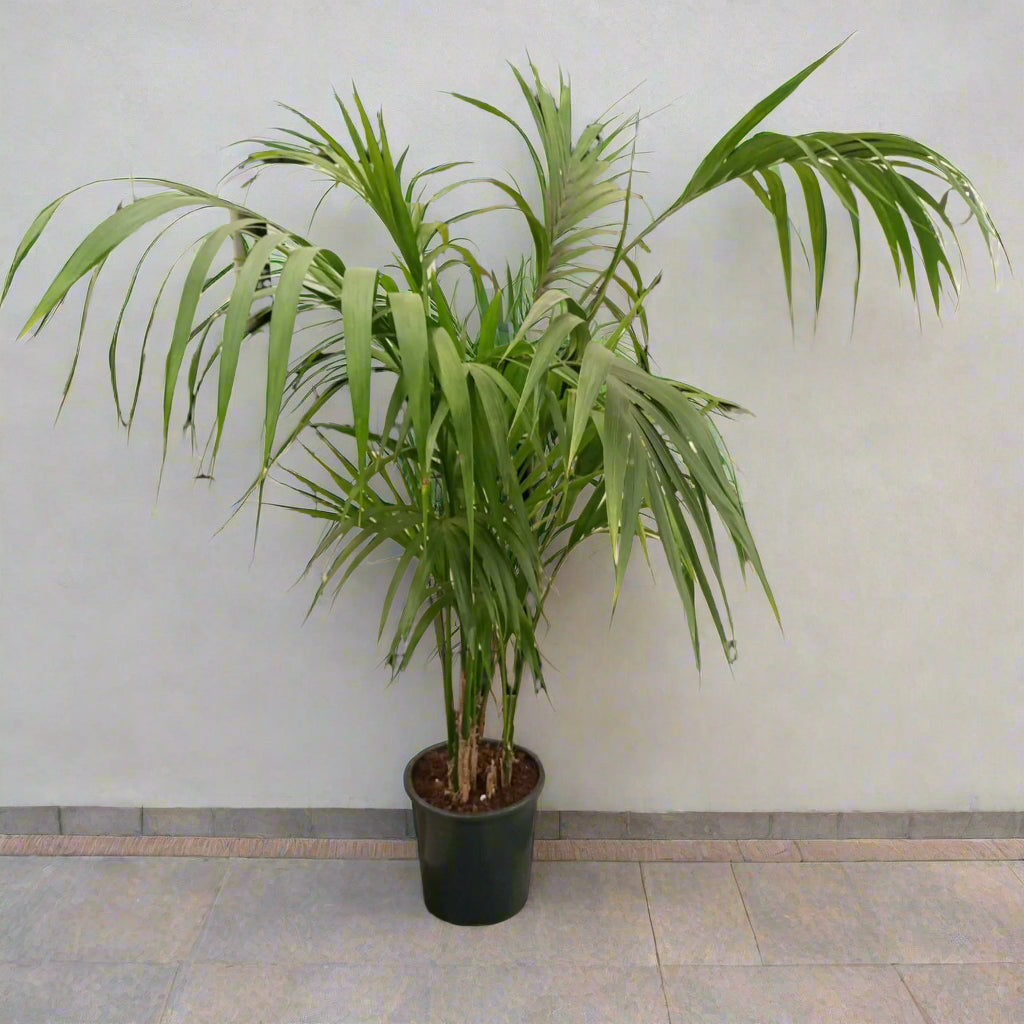Kentia Palm - Palm Howea Forsteriana Type E3, 1.5-2.0M (OAH)
Guarantee Safe Checkout
Website Exclusive - Free Delivery in Dubai & Sharjah
Free replacement if you receive a defective item during delivery

Kentia Palm - Palm Howea Forsteriana Type E3, 1.5-2.0M (OAH)
Palm Howea Forsteriana Type E3, 1.5-2.0M (OAH)
The Kentia Palm (scientific name: Howea forsteriana) is a popular ornamental palm native to Lord Howe Island, located in the Tasman Sea between Australia and New Zealand. It is a slow-growing, elegant palm known for its graceful, feathery fronds and adaptability to indoor environments. It is commonly used as a houseplant or landscape plant in tropical and subtropical regions.
Here are some key details about the Kentia Palm:
1. Appearance:
Size: Kentia palms can grow to be quite tall, reaching up to 10–12 feet (3–4 meters) indoors, and even taller when grown outdoors in optimal conditions.
Fronds: The palm has long, arching fronds with feathery, dark green leaflets. These fronds give the plant a graceful, elegant look, making it a popular choice for interiors.
Trunk: The trunk is slender and upright, with a smooth, grayish bark.
Flowers and Fruit: In its native habitat, the Kentia palm produces small, inconspicuous flowers followed by small, reddish-brown fruit, though flowering and fruiting rarely occur when grown indoors.
2. Uses:
Ornamental: The Kentia palm is prized as an ornamental plant for both residential and commercial indoor spaces. It is often found in lobbies, offices, living rooms, and atriums due to its ability to thrive in lower light conditions.
Landscaping: In tropical and subtropical regions, it is used for landscaping and garden design, adding an exotic, tropical feel to outdoor spaces.
3. Cultivation:
Climate: Kentia palms are suited for tropical and subtropical climates. They can be grown outdoors in USDA hardiness zones 9-11, where the temperature does not drop below 20°F (-6°C).
Light: Kentia palms are known for their tolerance to low light, which makes them ideal for indoor spaces with indirect sunlight. However, they still thrive in bright, indirect light.
Soil: They prefer well-draining, slightly acidic to neutral soil. A mix of potting soil with some sand or perlite for added drainage is ideal.
Watering: Water the palm when the top inch or two of soil feels dry. Overwatering can lead to root rot, so it’s important to allow the soil to dry out between waterings. In humid environments, the palm may need less frequent watering.
Humidity: The Kentia palm does well in moderately humid environments. If grown indoors, occasional misting or using a humidifier can help, especially in dry indoor air.
Fertilizing: A balanced, slow-release fertilizer during the growing season (spring and summer) can support its growth. Avoid fertilizing in winter when the plant is not actively growing.
4. Maintenance:
Pruning: Remove any dead or yellowing fronds to maintain the plant's appearance. Avoid cutting healthy fronds, as this can reduce the palm’s overall aesthetic and health.
Repotting: Kentia palms grow slowly and don't need frequent repotting. Repot when the plant outgrows its container, typically every 2-3 years, using a slightly larger pot to accommodate its root system.
5. Other Characteristics:
Slow Growth: One of the Kentia palm’s key features is its slow growth rate, making it a long-term investment for those who want a beautiful, low-maintenance indoor plant.
Tolerance: Kentia palms are relatively hardy and can tolerate neglect in terms of watering and light conditions compared to other palms, making them well-suited for people new to plant care.



